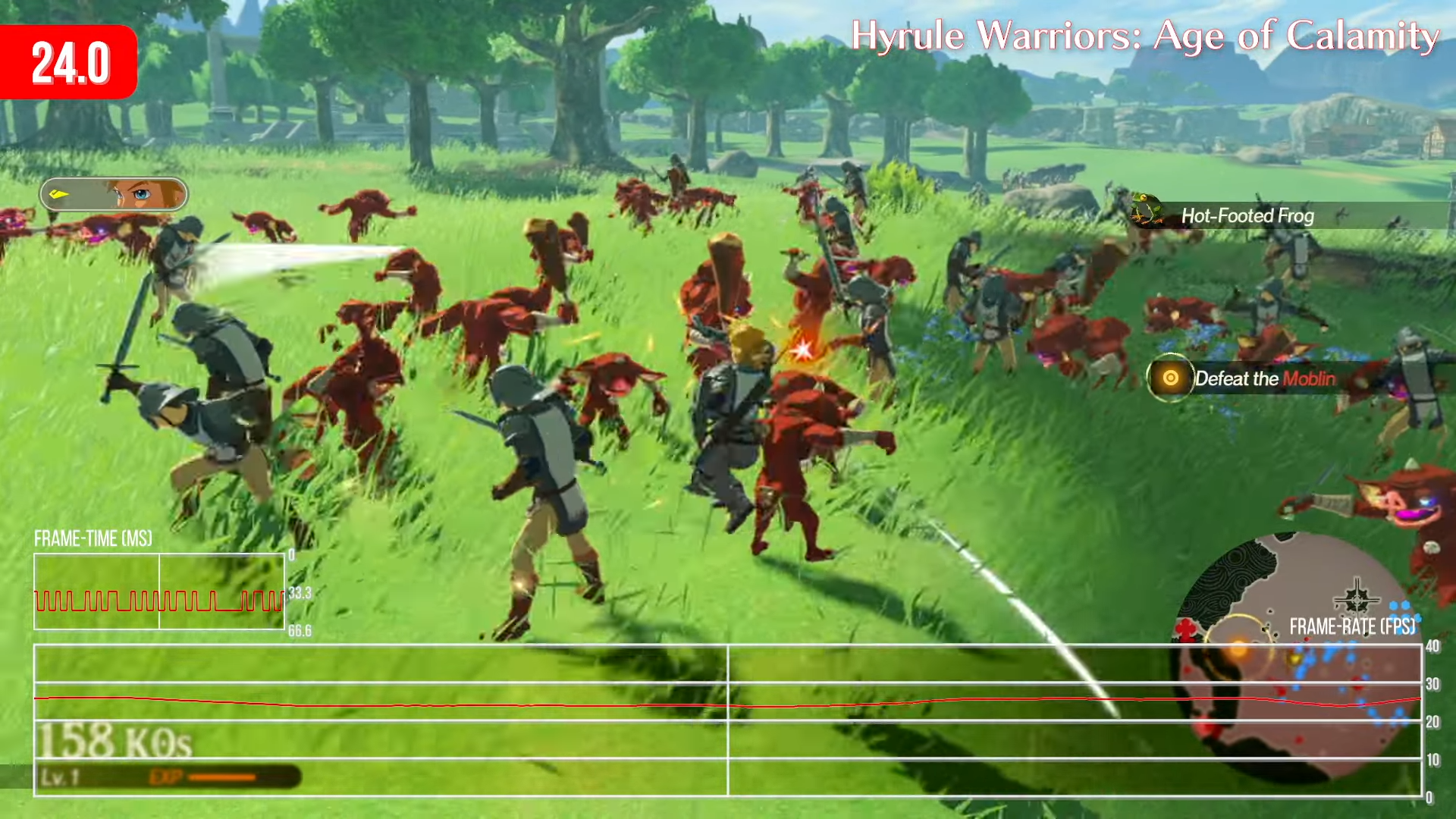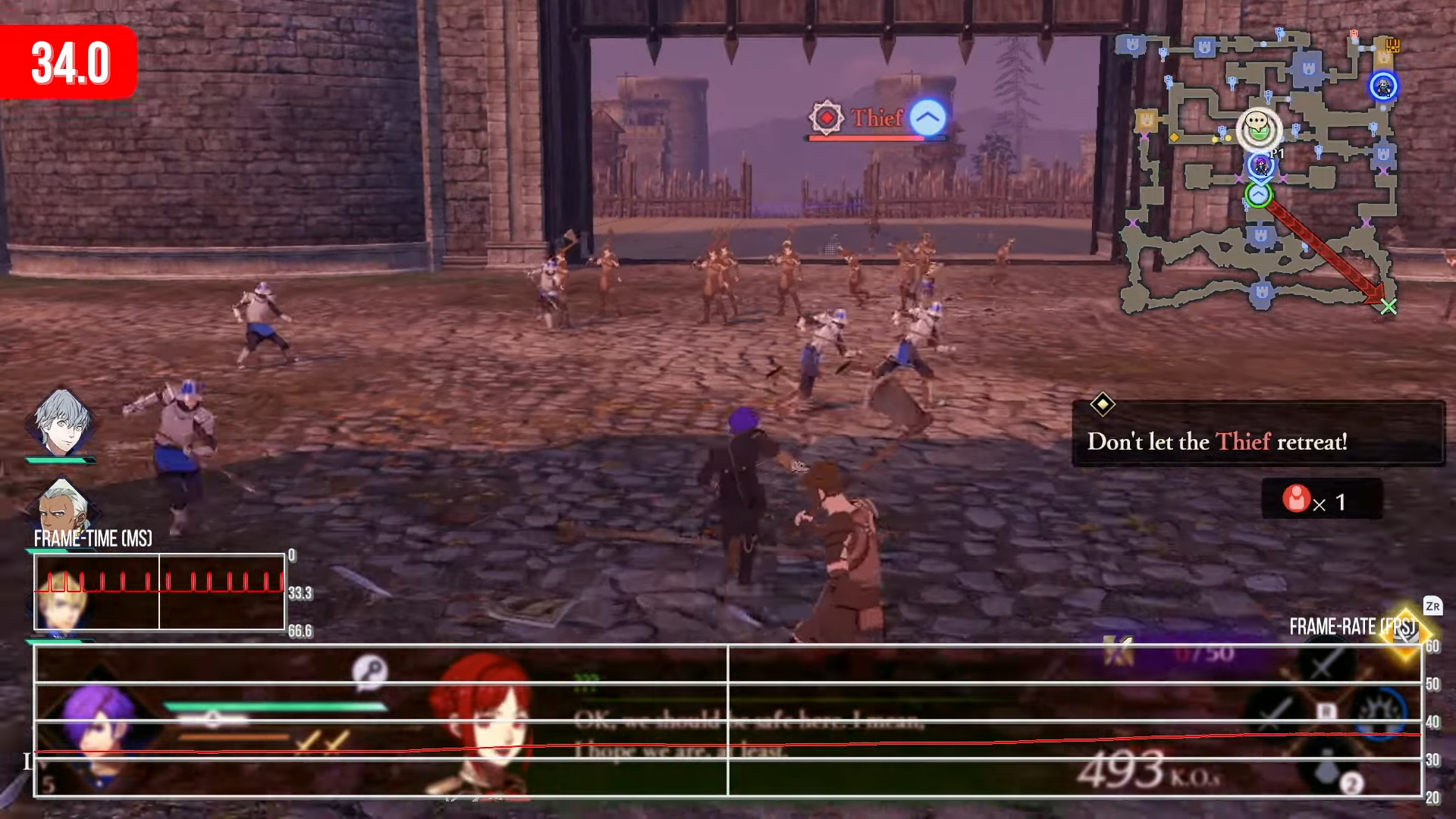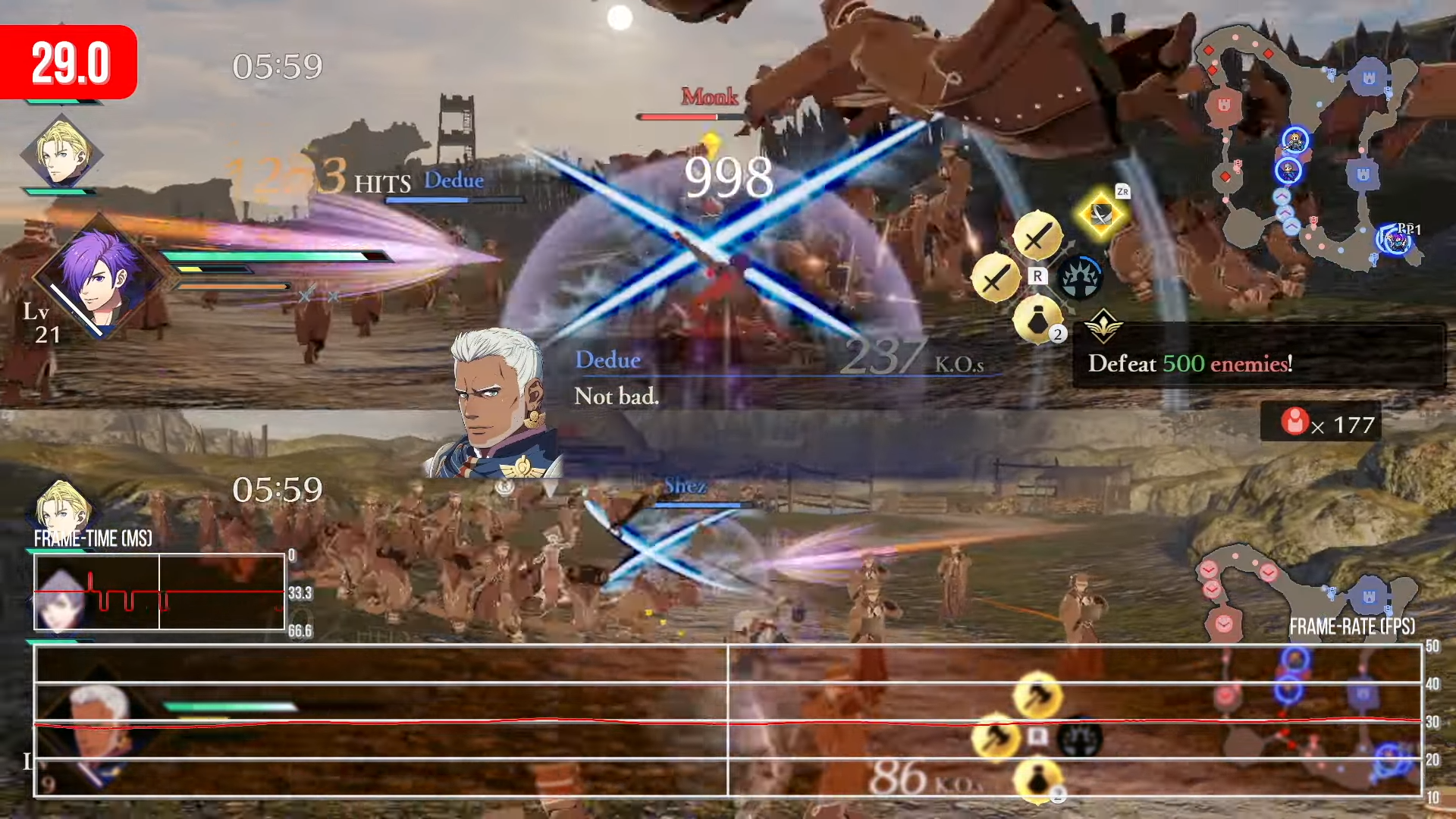Before we get into the performance, let’s talk about what the game is actually like. Three Hopes is a Warriors game through and through - complete with massive stages to explore, enemies to decimate and special moves to unleash - but it also expands upon the formula by being the most narrative-driven Warriors game I’ve played. The story follows a mercenary named Shez that joins one of the titular three houses, with the choice effectively changing the trajectory of the story which is told with character conversations after each scenario and in camp sequences where you can run around and interact with your team. In battle, there are also changes - you now have access to a map which allows you to send key units to attack enemies and accomplish objectives. Overall, it’s a more nuanced and complex take on the Warriors series that feels surprisingly satisfying.
The more complex gameplay is helped by improvements to the game’s performance over the past Warriors title on Switch - Hyrule Warriors: Age of Calamity. That game uses a dynamic resolution up to 810p when docked and features suitably strong anti-aliasing for a clean look, but the frame-rate regularly drops below 30fps when the action heats up. That’s a disappointment for a Nintendo-adjacent project, even one developed by Omega Force. Three Hopes is more significantly more stable and runs north of 30fps, which is accomplished by a similar 810p dynamic resolution docked (and ~540p portable), but with relatively weak anti-aliasing and poor texture filtering. The texture filtering isn’t ideal, given the preponderance for wide open spaces with flat surfaces, and neither is the anti-aliasing given the anime-style visuals. The thin black lines surrounding characters, for example, would really benefit from TAA. However, the higher frame-rate does make the game feel better to play, and persists better even during the sorts of special attacks that tanked performance in Age of Calamity. This remains true in both docked and in portable mode, and in turn means that the dynamic resolution is often higher too. However, not everything here is perfect on a technical level. The main visual critique I have with this game stems from the movement and animation - a problem shared with the first Fire Emblem Warriors. Basically, there’s a large bounding box in which the character can run around, which results in movement that feels weightless. Additionally, the running animation feels sped-up and attacks lack impact. Perhaps more confusing is the decision to ship the game with a fully unlocked frame-rate. The game tends to run in the 33-36fps range, which would translate nicely into a locked 30fps for much of gameplay if a cap were introduced, but instead we’re left with a variable frame-rate that can occasionally go as high as 50fps in small indoor scenes but drops much lower in combat. The game would feel a lot smoother with a 30fps cap, but at least if we ever get a Switch successor that runs the same games with increased performance, Three Hopes would be a good candidate to reach a solid 60fps. Beyond these technical foibles, there’s a lot to like for fans of the last Fire Emblem game on Switch. Three Hopes feels rather authentic versus Three Houses itself - the dialogue style, image quality and menu systems all feel like a continuation, which highlights Omega Force’s skill when it comes to matching art styles. Of course, the developers had an advantage in this case specifically - Omega Force is a division of Koei Tecmo and Koei Tecmo was responsible for the technical development of Three Houses. (Intelligent Systems focused on writing, art design and the game systems but outsourced the programming and technical side of things to this team at Koei Tecmo.) I’d imagine this partnership eased development for Omega Force in terms of matching the original designs. There’s also a two-player split-screen mode worth discussion. To support this, the visuals are trimmed back somewhat: shadows are disabled for characters and distant enemies are culled back significantly but surprisingly, performance doesn’t really take much of a hit. In fact, it seems to hover closer to 30fps, so it feels slightly less juddery than in single player. Of course, it can certainly plunge beneath the 30fps line in certain situations but it’s a solid way to enjoy the game that makes the battles more enjoyable. After spending some time with the game, I’ve walked away with a couple of conclusions. Firstly, in terms of overarching design, this is one of the more interesting Warriors games yet released - it feels like Omega Force is really onto something. The expansion outside of the combat bring a lot to the experience and the additional strategy enables easier command of the battlefield. Secondly, there’s the state of the technology powering these games - this studio has produced so many games over the years and theyir work has certainly improved in certain areas, but the technology feels like it needs an overhaul. The performance, rendering quality and animation work could all use improvements. So ultimately, Fire Emblem Warriors: Three Hopes is a solid Warriors game with plenty to love for Fire Emblem: Three Houses fans - it’s probably one of the better entries in recent years, in fact, and it shows that Omega Force is continuing to iterate on the Warriors formula. While a more comprehensive technical revamp will be necessary sooner or later, the biggest issue with Age of Calamity has been solved, making Three Hopes much more fun to play.


